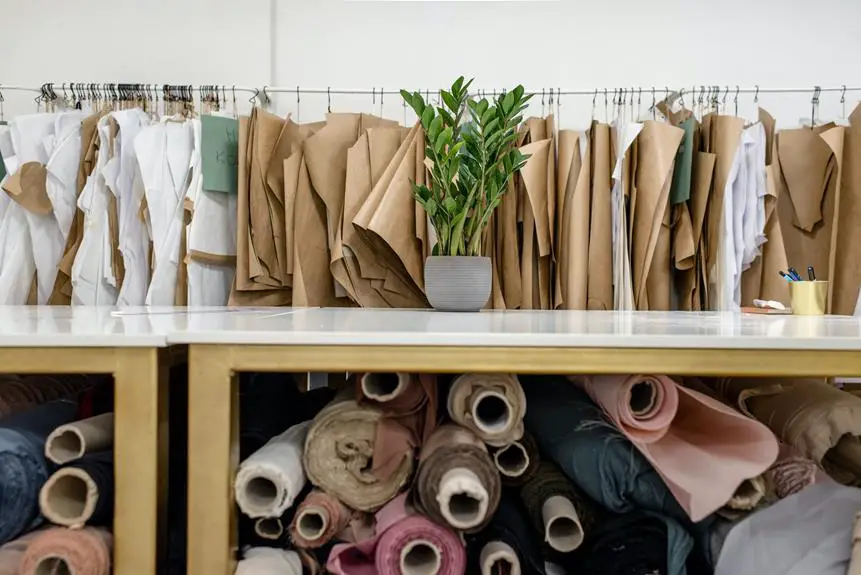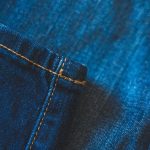Looking for the ultimate fabric choice? Consider monofilament. This versatile and durable material has been making waves across various industries, offering a unique combination of strength and flexibility.
As you delve into the properties and applications of monofilament fabric, you'll discover its potential to elevate your projects to new heights. From its environmental sustainability to its low maintenance requirements, monofilament stands out as a top contender for a wide range of settings.
In this exploration, you'll gain a deeper understanding of why monofilament may just be the fabric solution you've been seeking.
Key Takeaways
- Monofilament fabric offers exceptional durability and high strength, making it suitable for various uses and environments.
- It has excellent breathability and moisture-wicking properties, allowing for enhanced air circulation and quick drying.
- Monofilament fabric exhibits exceptional heat tolerance and chemical resistance, making it suitable for applications with exposure to harsh conditions.
- While monofilament fabric has its advantages, it may not be as durable as alternatives like nylon or polyester, and its transparency may not provide the desired privacy or opacity. Additionally, alternative fabric choices may offer better performance or cost-effectiveness, so it's important to consider limitations and drawbacks when selecting fabrics.
Properties of Monofilament Fabric
When considering monofilament fabric, durability is a key property to evaluate. Monofilament fabric is renowned for its exceptional durability, making it a popular choice for various applications. Its inherent strength and resistance to wear and tear make it ideal for demanding uses. Whether it's for outdoor gear, industrial applications, or even fashion, monofilament fabric offers unmatched longevity, ensuring that your products stand the test of time.
In addition to its durability, monofilament fabric boasts impressive strength. This attribute makes it suitable for heavy-duty tasks while maintaining its integrity under pressure. Whether you're designing a rugged backpack or a sturdy tent, monofilament fabric provides the strength needed to withstand challenging environments.
Moreover, the versatility of monofilament fabric is truly remarkable. Its ability to adapt to different uses and environments makes it a go-to choice for designers and manufacturers. From filtration systems to athletic apparel, this fabric proves its adaptability time and again.
Furthermore, the breathability of monofilament fabric sets it apart from other materials. Its ability to allow air to pass through while maintaining its structural integrity makes it an excellent choice for a wide range of products. Whether it's for sports attire or outdoor furniture, the breathability of monofilament fabric enhances comfort and performance.
Versatility in Various Industries
Have you ever wondered how monofilament fabric's versatility translates into different industries?
Monofilament fabrics offer a wide array of customization options, making them invaluable in various industrial uses. The fabric's exceptional strength and durability have made it a top choice in industries such as agriculture, automotive, and filtration.
In agriculture, monofilament fabrics are used for greenhouse shading, crop protection, and mesh bags for produce.
The automotive industry utilizes the fabric in car upholstery, seat belt webbing, and airbag fabrics due to its high tensile strength and resistance to abrasion.
Furthermore, monofilament fabrics are extensively used in filtration applications, ensuring the removal of contaminants from air, water, and food products.
Moreover, the medical field benefits greatly from monofilament fabric's versatility. The fabric's customizable properties are instrumental in producing medical implants, sutures, and surgical mesh. Its biocompatibility and ability to withstand sterilization processes make it ideal for medical applications.
The versatility of monofilament fabric extends across diverse industries, proving its value and adaptability in meeting specialized requirements.
Durability and Longevity
You can rely on monofilament fabric for its exceptional durability and longevity in various applications. The durability of monofilament fabric is attributed to its unique construction, which consists of a single continuous filament, providing high tensile strength and resistance to wear and tear. This makes it ideal for demanding applications where longevity is crucial. Durability testing of monofilament fabric often involves subjecting it to rigorous conditions, such as abrasion, UV exposure, and chemical exposure, consistently demonstrating its ability to withstand harsh environments.
Furthermore, the construction of monofilament fabric contributes to its longevity. The uniform structure and high molecular weight of the filaments result in a fabric that maintains its integrity over time, resisting degradation and maintaining its performance even after prolonged use. This longevity ensures that monofilament fabric remains reliable and effective, reducing the need for frequent replacements and minimizing downtime in various industries.
Comparing Monofilament to Other Fabrics
When it comes to comparing monofilament to other fabrics, there are several key points to consider.
First, the durability of monofilament sets it apart from many other options on the market.
Additionally, its breathability and moisture-wicking properties make it a standout choice for various applications.
Lastly, the versatility of monofilament in different settings further solidifies its position as a top fabric choice.
Durability of Monofilament
When choosing a fabric for durability, comparing monofilament to other fabrics can provide valuable insights into its long-term performance. Monofilament fabric is renowned for its exceptional durability and strength, making it a popular choice for various applications. To further illustrate the durability of monofilament, let's compare it to other common fabrics in terms of maintenance and care:
| Fabric Type | Durability | Maintenance | Care |
|---|---|---|---|
| Monofilament | High | Low | Easy |
| Nylon | Moderate | Moderate | Moderate |
| Polyester | High | Low | Easy |
| Cotton | Low | High | Moderate |
| Silk | Moderate | High | Delicate |
As depicted in the table, monofilament fabric stands out for its high durability, low maintenance, and easy care compared to other fabrics.
Breathability and Moisture-Wicking
Continuing the comparison from the previous subtopic, let's delve into how monofilament fabric excels in breathability and moisture-wicking when contrasted with other fabrics.
- Enhanced Air Circulation: Monofilament fabric allows for better airflow, keeping you cool and comfortable during physical activities.
- Moisture-Wicking Properties: Unlike traditional fabrics, monofilament efficiently draws moisture away from your skin, enhancing comfort and performance.
- Quick Drying: Monofilament fabric dries faster than many other fabrics, preventing the buildup of moisture and maintaining a dry feel.
- Optimal Performance: Monofilament's superior breathability and moisture-wicking capabilities make it an excellent choice for high-performance activities, ensuring you stay dry and comfortable throughout.
Versatility in Various Applications
You frequently encounter situations where monofilament fabric outperforms other fabrics in a variety of applications. Monofilament fabric excels in chemical resistance, making it suitable for applications where exposure to harsh chemicals is a concern. Additionally, its exceptional heat tolerance sets it apart from other fabrics, allowing it to withstand high temperatures without compromising its integrity. Below is a comparison table to illustrate the versatility of monofilament fabric in various applications:
| Application | Monofilament Fabric | Other Fabrics |
|---|---|---|
| Chemical Resistance | Excellent | Varies |
| Heat Tolerance | High | Limited |
In many practical scenarios, monofilament fabric's chemical resistance and heat tolerance make it the superior choice across various applications.
Applications in Different Settings
Get ready to explore the versatility and performance of monofilament fabric in various settings.
From outdoor gear to medical equipment, monofilament has proven its value in diverse applications.
Let's take a closer look at how this fabric excels in different environments and delivers exceptional performance across a wide range of uses.
Versatility in Various Settings
Rarely does a fabric offer the versatility that monofilament does in various settings. Monofilament's unique properties make it suitable for a wide range of applications, making it a standout choice in diverse settings.
Here are some examples of its versatile applications:
- Industrial Settings: Monofilament is commonly used in industrial settings for conveyor belts, filtration systems, and industrial mesh due to its strength and durability.
- Medical Field: Its biocompatibility and resistance to chemicals make monofilament an ideal choice for medical sutures and implantable devices.
- Sports and Recreation: From fishing lines to sports nets, monofilament's high tensile strength and flexibility make it a go-to material for sports and recreational equipment.
- Agricultural Sector: Monofilament is used in agriculture for applications such as shade cloth, bird netting, and trellis systems, where its durability and resistance to environmental factors are highly valued.
Performance in Diverse Applications
In various settings, monofilament fabric demonstrates exceptional performance across diverse applications, showcasing its versatility and reliability. The fabric's performance in diverse applications is a result of rigorous performance testing, ensuring that it meets the highest standards for various uses.
From industrial filtration to medical implants, monofilament fabric offers innovative applications that are unmatched by traditional materials. Its ability to withstand extreme conditions, such as high temperatures and heavy loads, makes it a preferred choice in demanding environments.
Whether in outdoor gear, medical textiles, or industrial settings, monofilament fabric consistently outperforms other materials. Its adaptability and resilience make it a top contender for a wide range of applications, proving its worth in the most challenging scenarios.
Environmental Impact and Sustainability
Consider the environmental impact and sustainability of monofilament as you weigh its fabric choice. Monofilament production often involves the use of non-renewable resources and can contribute to environmental pollution if not managed properly. However, sustainable practices can mitigate these negative impacts and make monofilament a more environmentally friendly choice.
- Resource Efficiency: Monofilament production can be resource-intensive, but advancements in technology and manufacturing processes have led to improved resource efficiency, reducing its environmental footprint.
- Recycling Programs: Many manufacturers have implemented recycling programs for monofilament, allowing for the reuse of materials and reducing the amount of waste that ends up in landfills or oceans.
- Renewable Energy Use: Companies are increasingly adopting renewable energy sources in the production of monofilament, decreasing reliance on fossil fuels and lowering greenhouse gas emissions.
- Biodegradability: Research and development efforts are focused on creating biodegradable monofilament options, addressing concerns about environmental impact and waste management.
Maintenance and Care Tips
To maintain the sustainability of monofilament fabrics, you should prioritize regular cleaning and proper storage practices to prolong their lifespan and minimize environmental impact.
When it comes to washing instructions, always follow the manufacturer's recommendations, typically involving gentle machine or hand washing with mild detergent and cold water to preserve the fabric's integrity. Avoid using bleach or harsh chemicals, which can degrade the material. Additionally, it's crucial to air dry the fabric to prevent damage from high heat.
Proper storage is equally important. Store monofilament fabrics in a cool, dry place away from direct sunlight to prevent discoloration and weakening of the fibers. Consider folding the fabric rather than hanging it to avoid stretching. If hanging is necessary, use padded hangers to distribute the weight evenly and prevent distortion. Furthermore, keep the fabric away from rough or sharp objects that could snag or tear it.
Potential Drawbacks and Limitations
When considering monofilament as a fabric choice, it's important to be aware of its potential drawbacks and limitations. While monofilament offers many benefits, there are some limitations and challenges to consider:
- Durability: Monofilament fabrics may not be as durable as alternatives such as nylon or polyester, particularly in high-stress applications.
- Transparency: The transparent nature of monofilament fabrics, while desirable in some cases, can also be a drawback as it may not provide the level of privacy or opacity required for certain applications.
- Limited Variety: Compared to other fabrics, monofilament may offer a more limited variety of textures and finishes, which could limit its suitability for certain design or functional requirements.
- Alternative Options: Depending on the specific application, there may be alternative fabric choices that offer better performance or cost-effectiveness than monofilament.
Understanding these limitations and drawbacks will help you make an informed decision when selecting fabrics for your project. It's important to weigh the benefits of monofilament against these challenges and consider alternative options to ensure the fabric choice aligns with your specific needs and requirements.
Frequently Asked Questions
Can Monofilament Fabric Be Used for Outdoor Applications in Extreme Weather Conditions?
Yes, monofilament fabric can be used for outdoor applications in extreme weather conditions. Its durability and breathability make it suitable for such settings. However, regular maintenance is essential to ensure its longevity and performance.
Are There Any Specific Maintenance and Care Tips for Monofilament Fabric Used in Medical or Healthcare Settings?
For maintaining monofilament fabric in healthcare settings, follow these tips: Use gentle cleaning techniques, consider sterilization methods, handle with care to preserve durability, and store properly to ensure longevity. Regular maintenance is key.
How Does Monofilament Fabric Compare to Other Fabrics in Terms of Breathability and Comfort?
When comparing monofilament fabric to others in terms of breathability, it excels due to its single-thread structure. Comfort assessment also favors monofilament for its lightweight and airy feel. These qualities make it a top choice.
What Are the Potential Drawbacks and Limitations of Using Monofilament Fabric in High-Traffic Industrial Settings?
In high-traffic industrial settings, monofilament fabric may have drawbacks like reduced durability and increased maintenance needs. However, with proper care, it can still be a viable option, especially in healthcare settings where hygiene and comfort are crucial.
What Is the Environmental Impact of Producing and Disposing of Monofilament Fabric, and What Sustainable Alternatives Are Available?
When considering the environmental impact of producing and disposing of monofilament fabric, it's crucial to explore sustainable alternatives. Understanding the full lifecycle of materials is key to making informed, eco-friendly choices in industrial settings.







